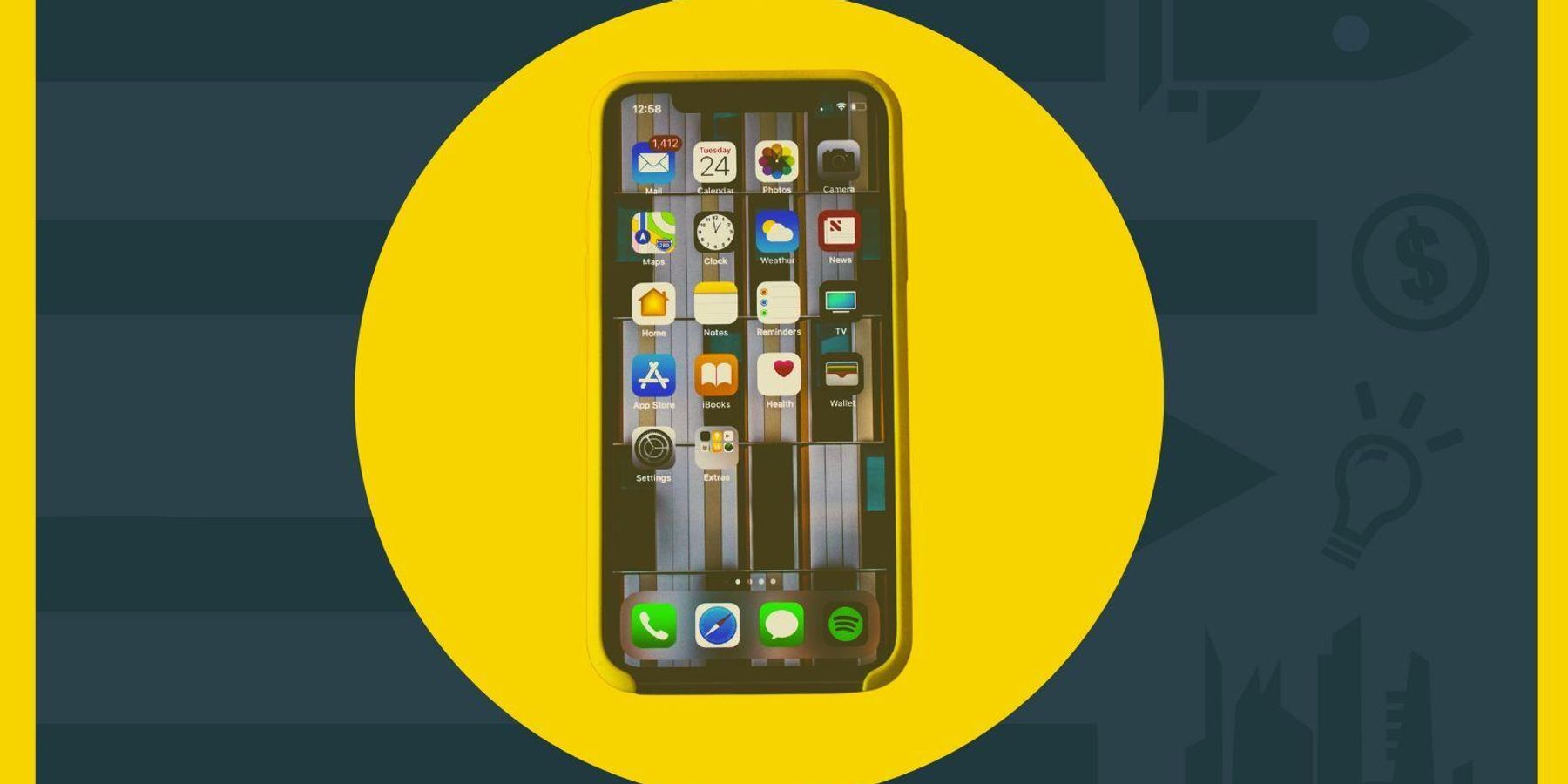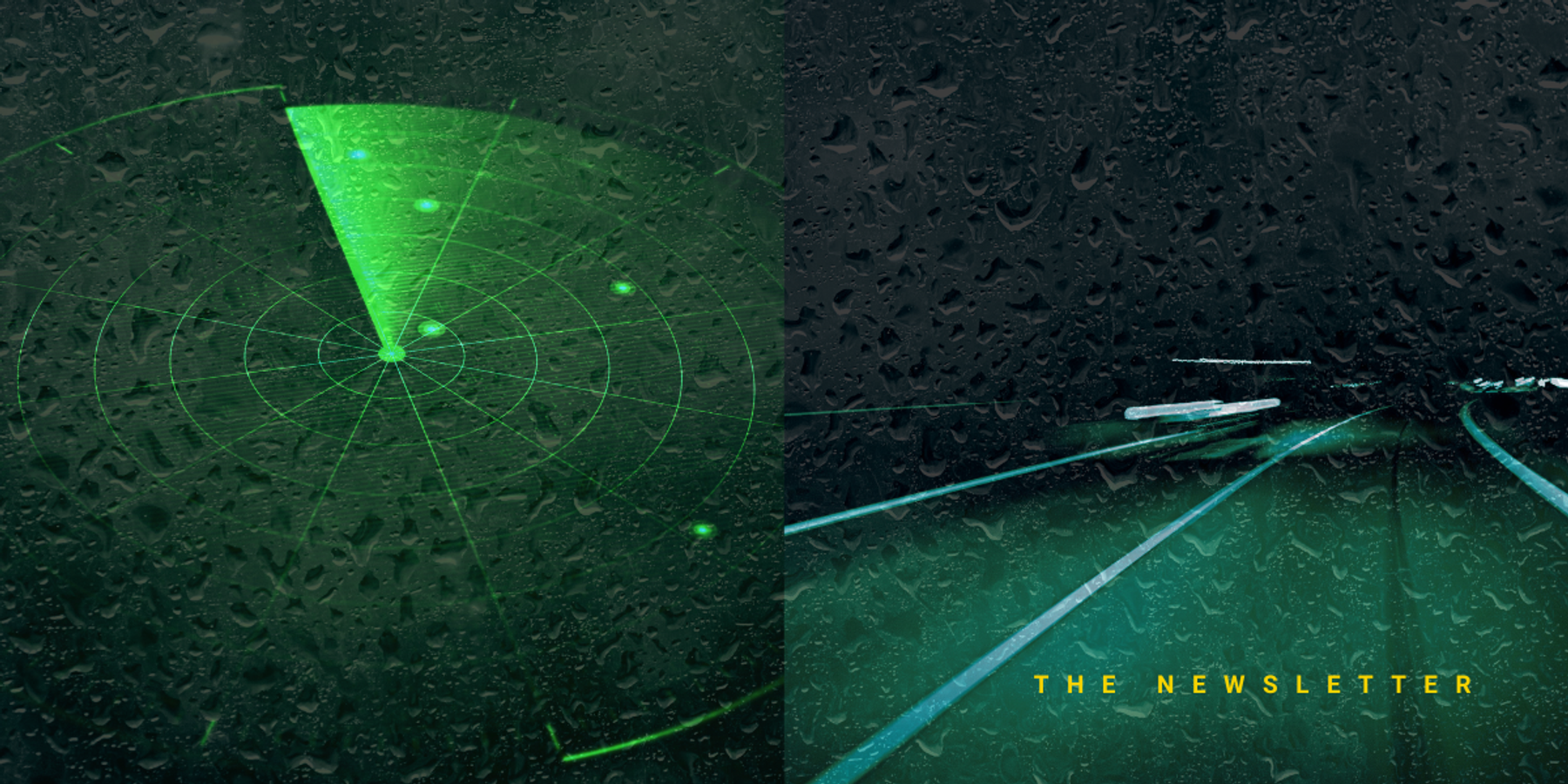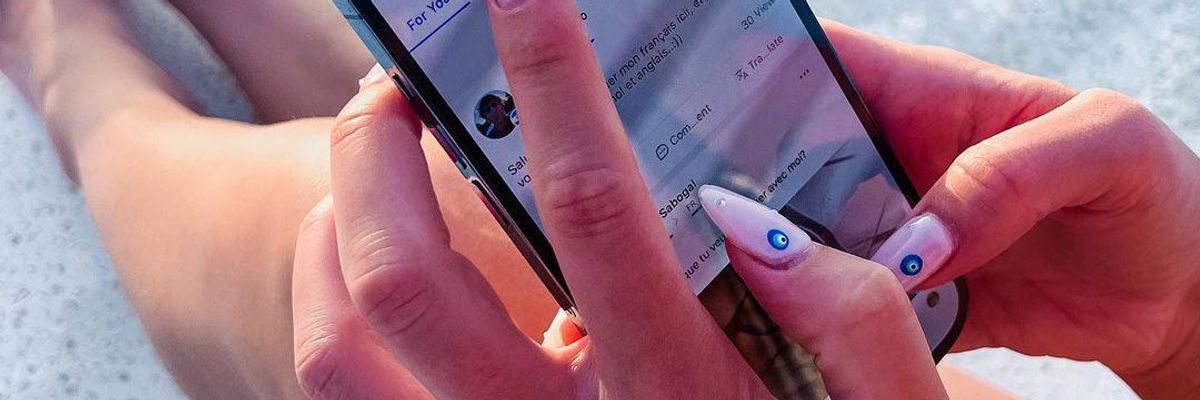

Get in the KNOW
on LA Startups & Tech
X
Photo courtesy of HeyPal
Meet HeyPal, the Language App Using Social Media Influencers To Spread the Word
Christian Hetrick
Christian Hetrick is dot.LA's Entertainment Tech Reporter. He was formerly a business reporter for the Philadelphia Inquirer and reported on New Jersey politics for the Observer and the Press of Atlantic City.
Katy Johnson, a reality TV star and globe-trotting travel blogger, has lately offered some advice to her more than 100,000 Instagram followers.
“I urge you to learn a new language,” the model has told her fans, noting how locals in the foreign countries she has visited appreciate the effort. “It’s essential to be able to connect with people as much as possible while I travel,” she wrote in another post last month. Johnson, a former contestant on the TV show “Joe Millionaire,” has repeatedly suggested one particular way to study a new language: HeyPal, a one-year-old language-learning app.
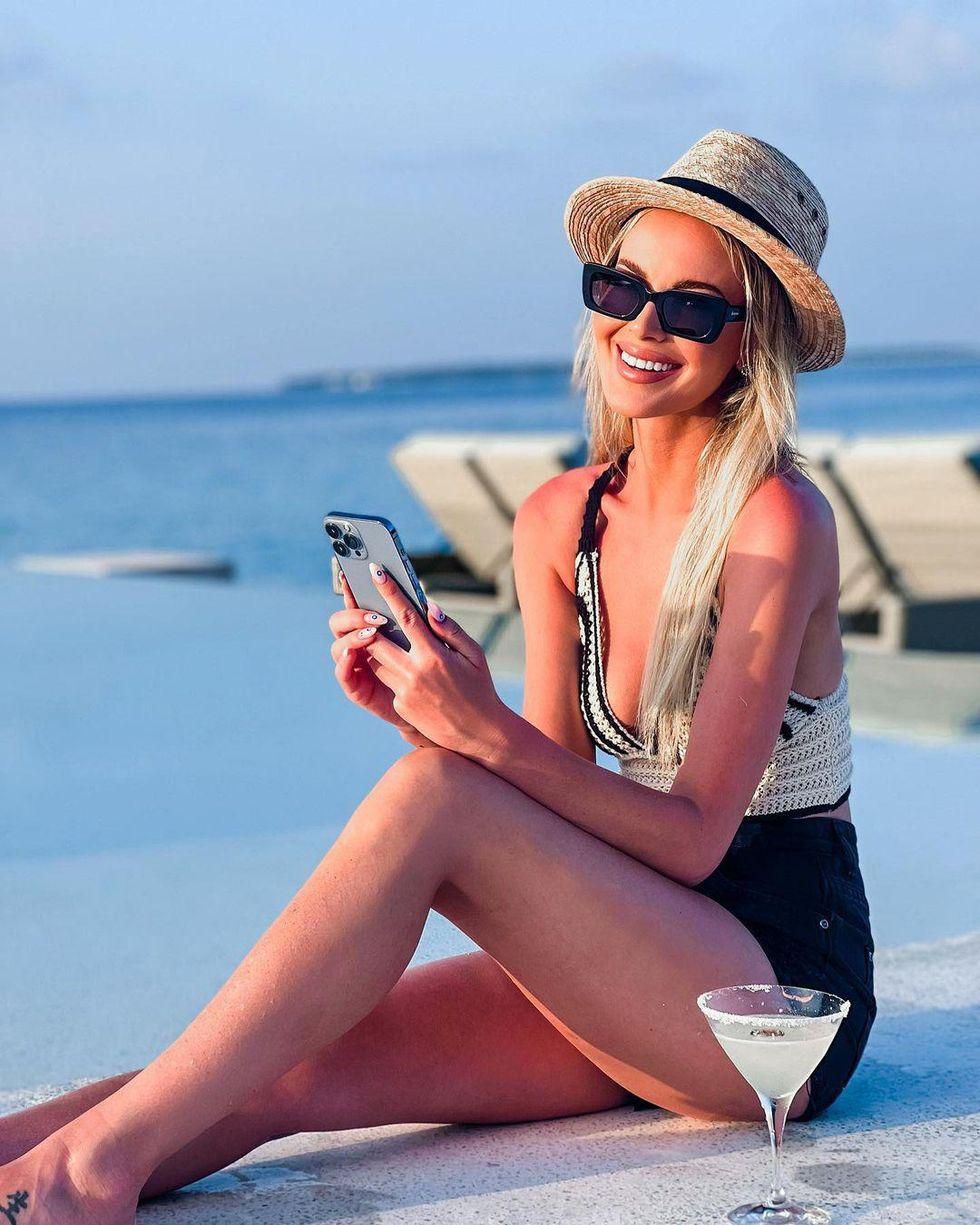
A photo from Johnson's Instagram account, which she's used to promote HeyPal.
Photo courtesy of HeyPal
“Today I wanted to work on some Arabic slang, so I literally can pull out the phone and use the app anywhere, anytime!” read a caption to one photo of Johnson sitting near the Indian Ocean with a smartphone in her hands and a cocktail nearby.
At first glance, her casual endorsements may look like mere tips from a travel expert. But the Instagram posts, sprinkled between photos of the model posing in exotic tropical locations, are part of a paid campaign by HeyPal, which is owned by Beverly Hills-based digital app developer ClickStream.
HeyPal—which promises to help users learn new languages through social media posts and online chats with native speakers—has made content creators like Johnson a key part of its marketing and growth strategy. The app is currently paying three influencers, including Johnson, to spread the gospel by showcasing glamorous real-life examples of how people can benefit from the platform.
HeyPal, which has racked up more than 1 million downloads since going live last June, is hardly the only brand turning to influencers. Spending on influencer marketing has exploded in recent years, jumping from only $1.7 billion in 2016 to $16.4 billion this year, according to research from Influencer Marketing Hub.
In some ways, influencer marketing is not much different from traditional celebrity endorsements where actors, artists and athletes hawk products in advertisements. But online influencers often forge deep relationships with their fans, making their endorsements more effective, according to experts. That’s especially true if the products or services they’re marketing naturally fit with the content they’re creating—such as Johnson highlighting a language-learning app as a travel blogger.
“At the end of the day, influencer marketing works because the audience trusts the creator,” Brad Hoos, CEO of influencer marketing agency The Outloud Group, told dot.LA. Hoos noted that customers acquired through influencers tend to stick with brands longer than those lured by other campaigns.
Launched in 2020, HeyPal aims to help people learn new languages by conversing with native speakers through social media features like chats, posts, comments and media uploads. HeyPal offers both free and paid versions of the app; the latter is available in two subscription tiers ($9.99 or $14.99 per month) and includes additional features like unlimited translations on posts and a “PenPal” feature that matches users who can teach each other new languages.
HeyPal CEO Jonathan Maxim, a marketing veteran who ClickStream hired for the role last year, told dot.LA that Johnson and the app’s other influencers bring credibility to the platform. Those other influencers include Jessica Killings, an actress, model and angel investor who, like Johnson, has a large Instagram following.
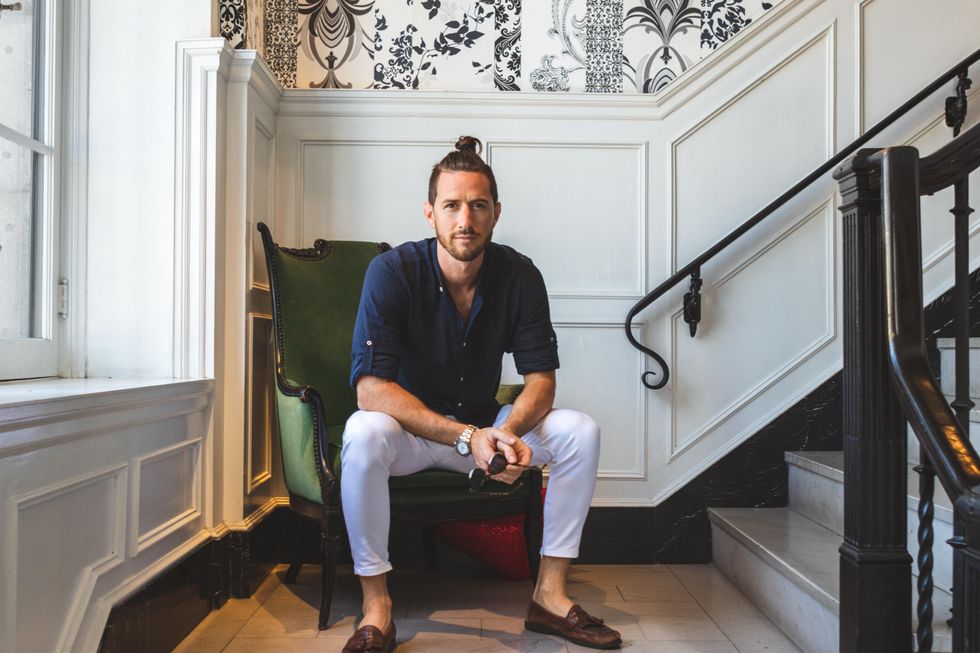
HeyPal has worked with roughly 20 influencers to date, though it has only struck paid partnership deals with three, according to Maxim. (“The other 20 or so are just enthusiasts of the mission,” he noted.) The company declined to share how much it pays influencers to market its app.
In addition to boosting the brand’s visibility, HeyPal’s influencers are able to steer people to the app or channels like its Instagram account, through which the company can later retarget them with ads or push notifications, Maxim said. HeyPal can measure reach, click-through rates and number of app downloads by influencer, and can optimize its ads accordingly.
“Influencer marketing serves the top of the funnel for us,” Maxim said. “Katy creates engaging content, brings people to the middle of the funnel, and then we retarget them and bring them to the bottom of the funnel—which is conversion and engagement in the app.”
Johnson’s Instagram endorsements don’t dig into the details of the app, but they subtly suggest the perks of learning a new language. An Instagram Reels video she made in March shows Johnson dancing and posing for selfies with people around the world—activities presumably made possible by her ability to speak different languages.
“These types of posts help people dream—to see a country and the beauty, the food, the people,” said Jamie Gutfreund, chief marketing officer for Los Angeles-based Whalar, a creator economy company that works with influencers and brands. “They can imagine what their experience could be, especially if they have learned the language.”
Creators have to tread carefully when it comes to corporate partnerships, however. Although brand deals may provide more stable income than platform ad revenue, creators have to ensure they don’t harm their authenticity by constantly promoting products, experts said. About 13% of fans say they have unfollowed a creator because they included too many ads in their content, according to a recent survey.
Johnson is keenly aware of that balancing act: She said she sends just a few promotional posts per month and doesn’t endorse anything on Instagram “unless I really believe in it.” Asked how she makes her promotional posts seem authentic, Johnson said she doesn’t need to.
“I don't really make it look like anything—it is authentic,” she told dot.LA, pointing to videos she shared of her playing with children in Kenya or receiving some help putting on a hijab in Egypt.
“Those are all real moments that I've had,” she added. “And some of these moments can be helped when I'm learning language from language apps.”
From Your Site Articles
- TikTok, Influencer Panic and the Celebrity Economy - dot.LA ›
- Los Angeles Influencer News - dot.LA ›
- Influencers and Influencer Trends to Watch in 2022 - dot.LA ›
- How Influencers Became Key to Big Brands During the Pandemic ... ›
- Why Creators Should Build Community Rather Than a Fan Base - dot.LA ›
Related Articles Around the Web
Christian Hetrick
Christian Hetrick is dot.LA's Entertainment Tech Reporter. He was formerly a business reporter for the Philadelphia Inquirer and reported on New Jersey politics for the Observer and the Press of Atlantic City.
Prediction: Here’s How Brands Will Find Their Way Around the Social Media ‘Platform Tax’ in 2023
08:00 AM | December 29, 2022
Image by Evan Xie
I spoke with a guy the other day who runs a $60-million-per-year ecommerce business. I asked what his number one problem is today.
His answer: “I’m paying Google and Meta 30% of every dollar in revenue. I know customers love my product, and I’d love to have a more direct connection with them.”
Truth is, I hear this all the time from marketers at business-to-consumer (B2C) and business-to-business (B2B) brands . And it’s not just those two players. TikTok, Snapchat, LinkedIn and others have built powerful platforms that keep users locked in, turning these sites into de facto gatekeepers for brands.
We call it the “platform tax.” You want to sell something digitally? You need to pay a platform for access first.
With the shaky economic outlook for 2023, many brands are cutting back their media dollars and seeking new avenues to reach potential customers.
We spent the first five years at Influicity helping brands work with influencers, including movie studios, consumer goods, automotive brands and so on. At its essence, these brands were tapping into communities that influencers had built using platforms that could provide massive scale.
Social marketing’s next evolution will see brands building their own communities. And these communities are directly tied to revenue. Here’s how they’ll do it:
Working Directly with Influencers
Content creators are a phenomenal community builder because they drive consumer attention while lending a halo to the brand. Influencers come in all shapes and sizes — from the micro, such as the neighborhood soccer mom to the mega, such as the reality show star.
We see more brands leaning towards long-term relationships with influencers to generate authentic and continuous demand. They’ll do this by partnering with individual influencers on longer term commitments (i.e. 6-12 months) with exclusive requirements (i.e. you can’t work with my competitors during this period).
A good example of this is apparel brand Hollister Co, who works with a group of about 30 influencers on live streams and custom collections.
We see brands doing this on the social platforms as well as other channels, like podcasts and email.
Turning to Podcasts
Massive communities have been built through podcasts: Joe Rogan, Lex Fridman and Alexandra Cooper, to name a few.
A brand example of this is RestoTalk, a podcast from restaurant-tech company TouchBistro. This podcast is hosted by Food Network star Justin Warner and has a loyal following of restaurant industry pros. (Disclosure: TouchBistro is a client of Influicity)
Another example is HubSpot, which acquired the podcast My First Million to reach the entrepreneurship community.
Podcasts avoid the platform tax because users can download or stream them directly from their favorite podcast app, like Apple Podcasts or Spotify. Brands only need to cover server fees.
Some marketers get tripped up because they think their podcast should be about their brand. It shouldn't. Your podcast should be about what your ideal customer cares about. Running a food brand? Talk about recipes and meal prep. Have a construction company? Talk about architecture and building innovations.
There are lots of opportunities for brands that put in the time.
Building a Rapport By Email
It was old, then it was new, then it was old —now it’s new again. When done right, regular emailing can actually be a great community builder. They can become a part of the user’s daily ritual. And they can work with many different formats including text, photo and video.
Email can easily be the largest single revenue driver for consumer brands. It can also help B2B brands build a sales pipeline.
Consumer apparel brands like Tilley.com and Indochino.com (full disclosure: both are clients of mine) have daily emails that drive hefty ecommerce sales. On the B2B side, analytics company Ahrefs offers a weekly newsletter that is very popular with search marketing professionals.
Email is also one of the few non-interceptable communication vehicles. No news feed algorithm is going to filter out your message. You can’t be de-platformed, and you don’t need to pay for access to an inbox.
Organic Reach on Platforms
The same platforms that charge for access are also your best allies in creating communities: TikTok, Instagram, Twitter, LinkedIn and the rest.
I know brand leaders will complain that their content is getting filtered out and only seen by 2% of their followers.
So here’s a secret from first-hand experience: I get 500K to 1 million impressions per month (free) on LinkedIn. And it’s not luck.
It's a deliberate exercise in figuring out what the platform wants to surface and playing into that theme. And you need to do this while staying true to your own brand.
While there’s no one-size-fits-all solution, one or more of these channels could be a vital part of your brand’s communication strategy. As 2023 rolls around, take the time to experiment with the right mix. It’s not an easy balance, but it’s critical to building a community of your customers.
From Your Site Articles
- Los Angeles Creator Economy News - dot.LA ›
- Employee By Day, Influencer By Night: The Rise Of Non-Professional Creators ›
- Instagram and Facebook Announce 3 New Tools To Make Turning a Profit Easier For Creators ›
- How Influencers Became Key to Big Brands During the Pandemic — and Why They'll Continue to Grow ›
- More and More Influencers Are Launching Their Own VC Funds — Here’s Why ›
Related Articles Around the Web
Read moreShow less
CHAOS in the Skies, Valar in the Core and Robotaxis on the 405
09:24 AM | November 14, 2025
🔦 Spotlight
Hello LA!
If you are reading this while watching the clouds stack up over the city, you are not wrong. The forecast is calling for heavy rain and possible flooding through Sunday, so consider this your permission slip to cancel a few plans, stay dry and catch up on what the hard-tech crowd has been building this week.
Let us start with the least subtle name in local defense tech. CHAOS Industries just closed a $510 million dollar round led by Valor Equity Partners, valuing the company at $4.5 billion dollars and pushing its total funding past the $1 billion dollar mark in under three years. The company builds Coherent Distributed Networks radar, essentially a mesh of smaller, lower cost sensors that can pick up drones and other low flying threats minutes earlier than legacy radar systems, a gap that has become painfully obvious on modern battlefields. The new capital is going toward product development and manufacturing so militaries and border agencies can actually field these systems at scale rather than treating them as one-off experiments.
What makes CHAOS interesting is not just the size of the round but the architecture choice. Instead of a single massive radar on a hill, they are betting on distributed, software first networks that can be upgraded, repositioned and re-tasked as threats change. It is a very cloud-era way of thinking about defense hardware, and it is pulling engineers from a mix of aerospace, gaming and traditional software backgrounds into a category that used to be the domain of slow, closed incumbents.
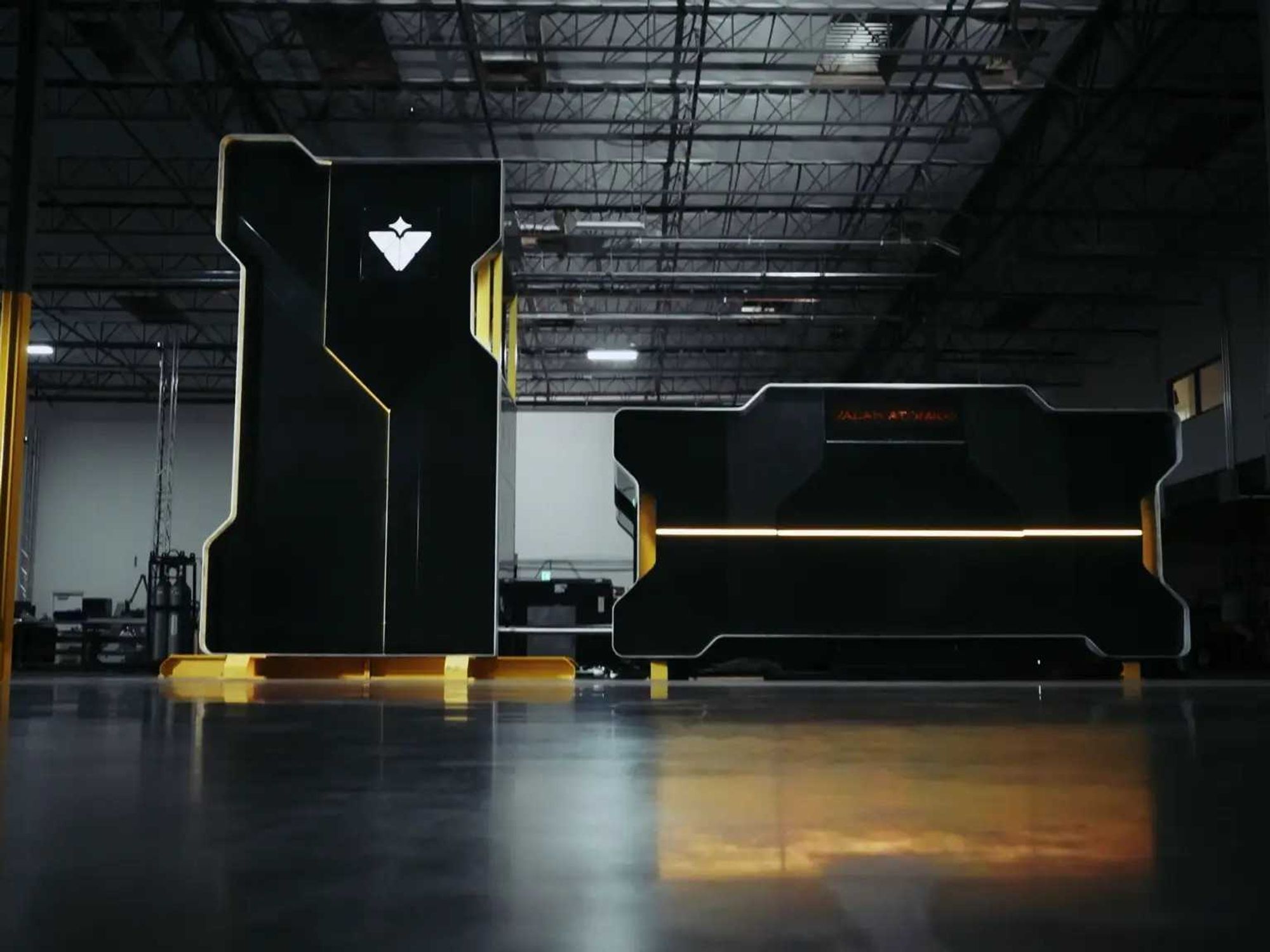
If CHAOS is focused on keeping the skies manageable, Valar Atomics wants to keep the lights on for everything that needs compute. The Hawthorne based nuclear startup raised $130 million dollars in Series A funding led by Snowpoint Ventures, with participation from Crosscut Ventures and a roster of deep tech backers that includes Palmer Luckey and Palantir CTO Shyam Sankar. Valar is building compact, high temperature gas reactors that use TRISO fuel and helium coolant, designed for strong safety characteristics and very high operating temperatures.
Instead of a single gigantic nuclear plant, Valar’s plan is to mass produce one standardized reactor design and cluster hundreds of them on “gigasites” that sit directly behind the meter for big energy users. Think hydrogen production, AI data centers, heavy industry and synthetic fuel plants, not just electrons on the grid. Construction is already underway on a first test reactor in Utah, targeted for completion in 2026, and the company is positioning itself as part of a new wave of nuclear companies that treat reactors as a product you replicate, not a megaproject you tolerate.

On the consumer side, your weekend mobility options are getting an upgrade too, weather permitting. Waymo has begun routing paid robotaxi rides onto freeways in Los Angeles, alongside San Francisco and Phoenix, after years of staying mostly on surface streets. The company says freeway segments can cut some trip times by as much as half, making a driverless ride to LAX or a cross town trek on the 405 feel less like a novelty and more like a practical option. Regulators and human drivers now have to figure out what it means to share the fast lane with cars that never get tired and never text at red lights.

Apple is also coming for the least fun part of any LA trip: the airport ID check. The new Digital ID feature lets you create a passport based identity inside Apple Wallet that TSA will accept at more than 250 airports for domestic travel, including LAX. You scan your passport, verify with Face ID and then present your Digital ID at TSA checkpoints using your iPhone or Apple Watch without handing over your device. It will not replace a physical passport for international flights, but it does mean boarding passes, credit cards and ID can all live in the same tap-to-go flow the next time you sprint to Terminal 4.
Between radar that sees drones earlier, reactors that promise industrial scale clean power and robotaxis that hop on the freeway, a lot of the future is quietly being wired in while you hunt for an umbrella. Stay safe, stay dry this weekend and keep scrolling for this week’s venture rounds, fund announcements and acquisitions.
🤝 Venture Deals
LA Companies
- Skims has raised $225M in new funding at a $5B valuation, in a round led by Goldman Sachs Alternatives with participation from BDT & MSD Partners. The company plans to use the capital to accelerate its shift toward brick-and-mortar retail and international expansion, while continuing to invest in product innovation across intimates, shapewear, apparel, and activewear, including its new NikeSKIMS collaboration; Skims is on track to surpass $1B in net sales in 2025, just six years after launch. - learn more
- Neros has raised $75M in a Series B round led by Sequoia Capital, with participation from existing investors Vy Capital US and Interlagos, bringing its total funding to over $120M. The El Segundo based defense drone startup will use the capital to massively scale production of its Archer and Archer Strike FPV drone platforms and ground control systems, expand industrial capacity, and deepen a China-free, allied supply chain. The raise coincides with Neros being selected as one of the primary FPV drone suppliers for the U.S. Army’s Purpose-Built Attritable Systems program, following a major Marine Corps drone order. - learn more
LA Venture Funds
- BAM Ventures joined Exowatt’s new $50M financing round, backing the Miami based company’s push to deliver dispatchable, American made solar power to AI data centers and other energy hungry industrial sites. The round, an extension of Exowatt’s $70M Series A led by MVP Ventures and 8090 Industries, brings the company’s total funding to $140M in under two years. Exowatt will use the capital to expand U.S. manufacturing and scale deployments of its modular P3 system, which stores solar energy as heat and converts it to electricity on demand to provide round the clock, grid independent power. - learn more
- WndrCo joined the $145M Series B round for Alembic, the AI marketing analytics startup it first backed in early 2024, as the company’s valuation jumped to $645M. The round was led by Prysm Capital and Accenture and will help Alembic scale its platform, which uses AI to link brand marketing across channels like TV, podcasts and social media to real sales outcomes. Alembic also plans to use part of the funding to build a new Nvidia powered supercomputing cluster in San Jose to support growing demand from enterprise customers. - learn more
- Magnify Ventures joined Joy’s $14M Series A round, backing the San Francisco based startup’s push to build an AI powered parenting platform that blends machine intelligence with real human experts. Co-led by Forerunner and Raga Partners, the funding coincides with the launch of the Joy Parenting Club app, which gives new parents and parents of toddlers 24/7 access to certified coaches plus AI driven guidance, milestone tracking and personalized product recommendations. Joy plans to use the capital to further develop its AI model, expand partnerships with baby and parenting brands, and grow its expert network to support families through more stages of childhood. - learn more
- Overture VC, via its climate focused Overture Climate fund, reupped in Harbinger’s $160M Series C round as the medium duty electric and hybrid truck maker continues to scale its U.S. built EV platform. The round was co led by FedEx, Capricorn’s Technology Impact Fund, and THOR Industries, and includes existing backers like Tiger Global, Ridgeline, Maniv Mobility, Schematic Ventures, Ironspring Ventures, ArcTern Ventures, Litquidity Ventures, and The Coca Cola System Sustainability Fund. Harbinger will use the capital to ramp production of its electric stripped chassis platform and fulfill an initial FedEx order for 53 Class 5 and 6 trucks, supporting large fleet electrification and last mile delivery use cases. - learn more
- Sound Ventures joined the $60M Series B round for GC AI, an AI platform built for in-house legal teams, alongside lead investors Scale Venture Partners and Northzone. The new funding values the San Francisco based startup at $555M and brings its total capital raised to $73M. GC AI will use the money to accelerate product development and deepen its integrations and AI agents, building on rapid growth to more than 1,000 customers, $10M in ARR, and 1.75 million legal prompts processed in under a year. - learn more
- Fulcrum Venture Group doubled down on its backing of Code Metal, joining the startup’s $36.5M Series A to support its push to bring verifiable AI powered code translation to mission critical industries. Led by Accel at a $250M valuation, the round also brought in RTX Ventures, Bosch Ventures, Smith Point Capital, Overmatch VC, AE Ventures, Shield Capital, J2 Ventures, and several strategic angels. Code Metal will use the capital to expand its platform across defense, automotive, and semiconductor customers, promising formally verified, regulation-ready code that can be ported between chips and modernized much faster than traditional methods. - learn more
- MarcyPen Capital Partners led Rebel’s $25M oversubscribed Series B to scale the company’s returns recommerce marketplace, which helps retailers resell open box and overstock goods instead of sending them to landfills. The new capital will fund expansion into outdoor and sporting goods categories with existing retail partners and support broader growth of Rebel’s tech platform, which processes and resells returned products at up to 70 percent off retail while tackling the trillion dollar returns problem. - learn more
- Halogen Ventures joined Auditocity’s $2M seed round alongside Techstars, Innovate Alabama, and several angel investors to help scale the company’s AI driven HR compliance auditing platform. The Alabama based startup plans to use the capital to expand nationally and deepen its intelligent automation tools so HR teams can spot compliance risks in real time and resolve issues before they become costly problems. - learn more
- Upfront Ventures joined Majestic Labs’ more than $100M financing as the AI infrastructure startup emerged from stealth with a new memory centric server architecture. Founded by ex Google and Meta executives, the company claims its all in one servers deliver up to 1000 times the memory capacity of top tier GPU systems, effectively replacing multiple racks with a single box for the largest AI workloads. Majestic will use the capital to grow its team, finish its full software stack, and run pilot deployments with customers looking to cut power use and costs while training massive models. - learn more
- Alexandria Venture Investments and Freeflow Ventures joined an oversubscribed round of more than $100M for Iambic, a San Diego based biotech using an AI driven discovery platform to develop new cancer therapies. The clinical stage company will use the fresh capital to expand its operations and advance a pipeline that includes IAM1363, a HER2 targeted candidate that has already shown early anti tumor activity, as well as additional AI designed programs and pharma partnerships. - learn more
- EGB Capital joined Extellis’ $6.8M oversubscribed seed round, backing the Durham based startup’s push to deliver reliable, all weather satellite imagery at industrial scale. Led by Oval Park Capital with participation from Duke Capital Partners, First Star Ventures, New Industry Ventures, Front Porch Venture Partners, and Blue Lake VC, the funding will support Extellis’ first satellite launch and initial product rollout. - learn more
- Core Innovation Capital joined Arrived’s $27M Series B style funding round, backing the Seattle startup’s push to make fractional real estate investing feel more like buying stocks. Led by Neo with participation from Forerunner Ventures, Bezos Expeditions, and other investors, the new capital will help Arrived scale its “stock market for real estate” platform and recently launched Secondary Market, which lets investors buy and sell shares of individual rental homes across the U.S. with just a few clicks. - learn more
- Strong Ventures participated in a new pre Series A round for Provotive, the company behind AI packaging design platform Packative. The round was led by Japanese VC firm Miraise, with Korean fund VNTG and a Japan based strategic CVC also joining. Provotive plans to use the capital to expand its AI driven packaging services across Japan, Korea, and the broader Asian market, helping brands quickly generate localized, customized packaging at scale. - learn more
LA Exits
- Nativo is being acquired by family safety and location app Life360 in a cash and stock deal valued at about $120M. The acquisition folds Nativo’s native ad platform, programmatic tools, and publisher network into Life360’s advertising business so brands can reach families both inside the Life360 app and across CTV, mobile, and premium web environments. The companies say the combined platform will offer a full funnel, privacy minded, “family safe” ad solution and expect the deal to close in January 2026, pending customary approvals. - learn more
- RealtyMogul, an online real estate crowdfunding and investment platform, has been acquired from its venture backers by The Wideman Company, a cash flow focused, high touch real estate investment firm. The deal gives RealtyMogul a long term owner while keeping its brand and digital marketplace intact, supporting a member base that has invested more than $1.2B of equity into properties valued above $8B. The Wideman Company says the acquisition will bring additional capital and strategic support to expand RealtyMogul’s offerings and deal flow for individual investors and real estate sponsors. - learn more
Read moreShow less
RELATEDTRENDING
LA TECH JOBS

